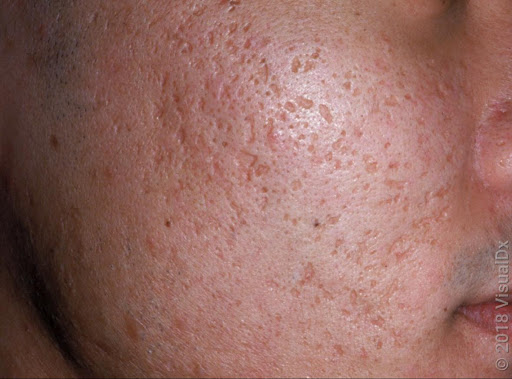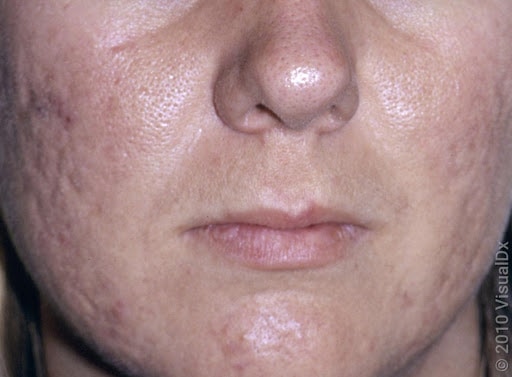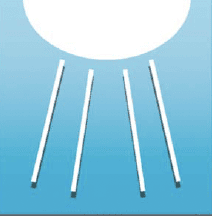Scars
Acne scars
Acne is an inflammatory skin disease that affects more than 80% of people aged 15-30 and 5% of those over 30. In addition to having a significant impact on quality of life, a frequent consequence is the appearance of scars, which form after the repair of dermal inflammation.


Frequently asked questions
Click on the question to expand the answer
Inflammatory acne can cause hypertrophic or keloid scars, or atrophic scars, which are the most common.
Atrophic scars include the following types:
- Icepick scars: these are narrow, deep scars that are V-shaped.

- Boxcar scars: these scars vary in depth and are wide.

- Rolling scars: the widest and shallowest scars, with smooth, poorly defined edges and shadowing the skin.

Diagrams from Boen M, Jacob C. A Review and Update of Treatment Options Using the Acne Scar Classification System. Dermatol Surg. 2019 Mar;45(3):411-422. doi: 10.1097/DSS.0000000000001765. PMID: 30856634.
Although there is no definitive treatment, we can attenuate the appearance of scars by using different methods. The choice of treatment must be individualised in all cases and will vary depending on factors such as the type of scarring, location and phototype of the patient. A combination of these therapies is usually required to achieve good results.
Treatments available for acne scars include lasers, subcision, surgery, fractionated needle radiofrequency, platelet-rich plasma, and the use of fillers and chemical peels.
The selection of light devices and lasers in the treatment of scars will depend on the alterations seen in the skin
- Vascular lasers such as KTP (532nm), pulsed dye laser, ND:YAG laser or pulsed light. They improve and control the inflammatory component of acne.
- Ablative laser: ABC
- Non-ablative laser: ABC
- Picosecond fractional lasers: ABC
- Pigment lasers: allow the treatment of post-inflammatory hyperpigmentation that may be left by some acne lesions.
Book an appointment
You can make an appointment by phone, via email, or by filling in this form.
